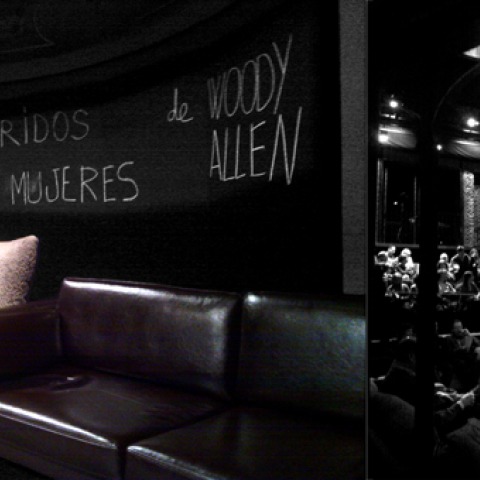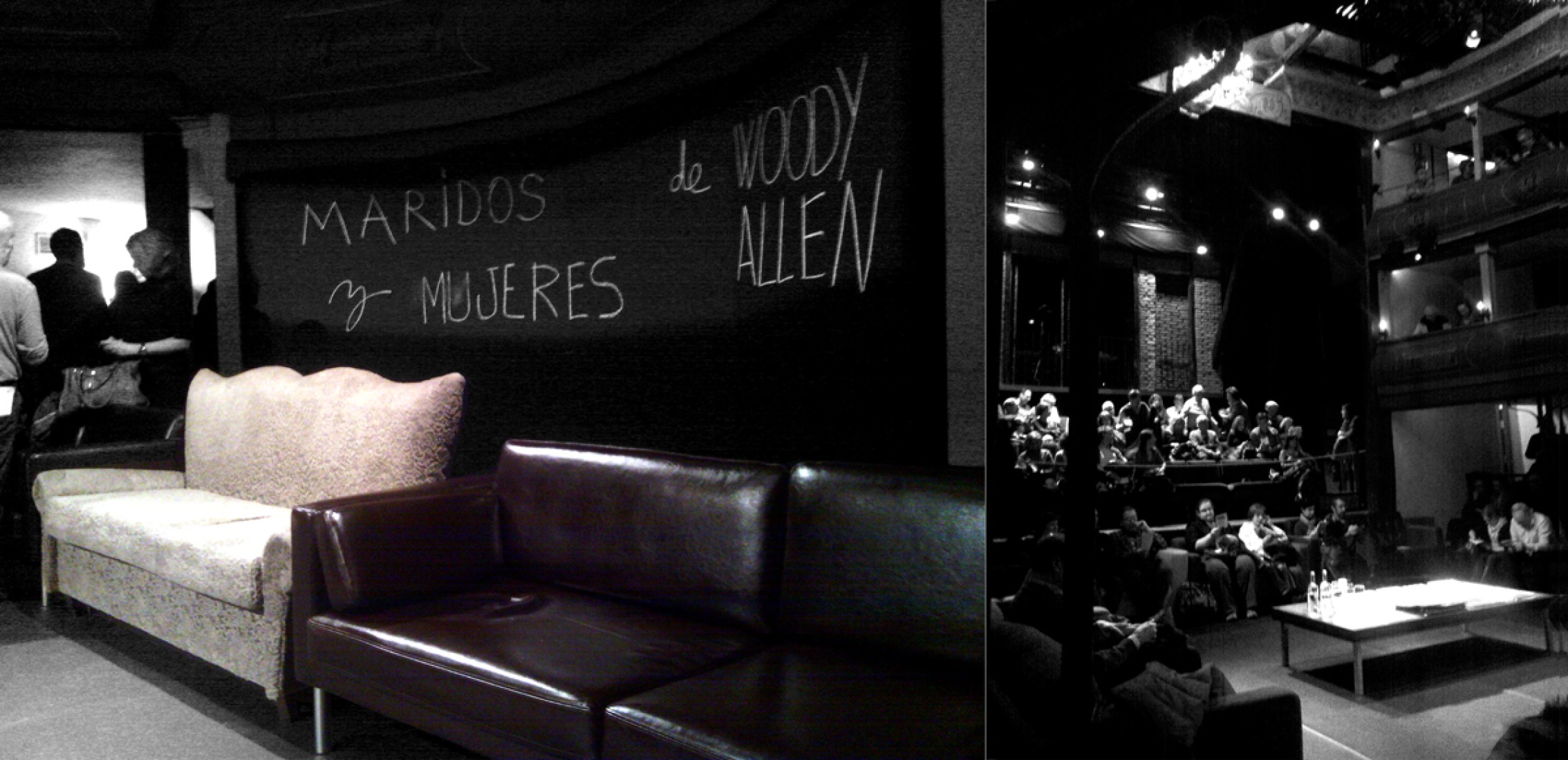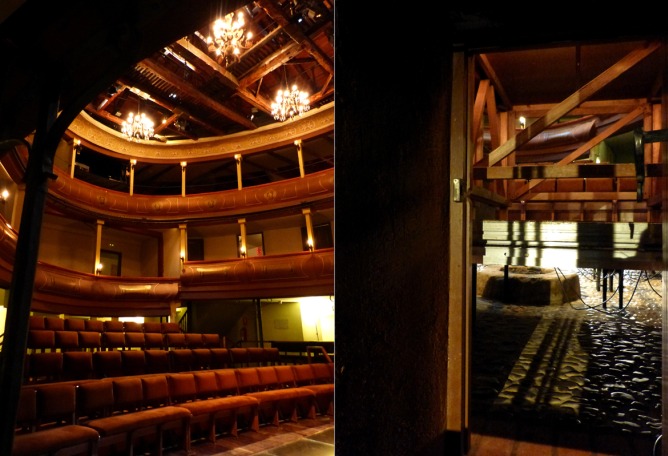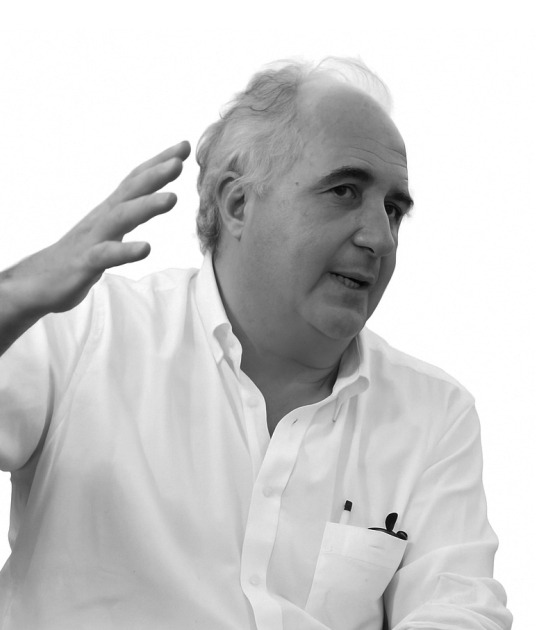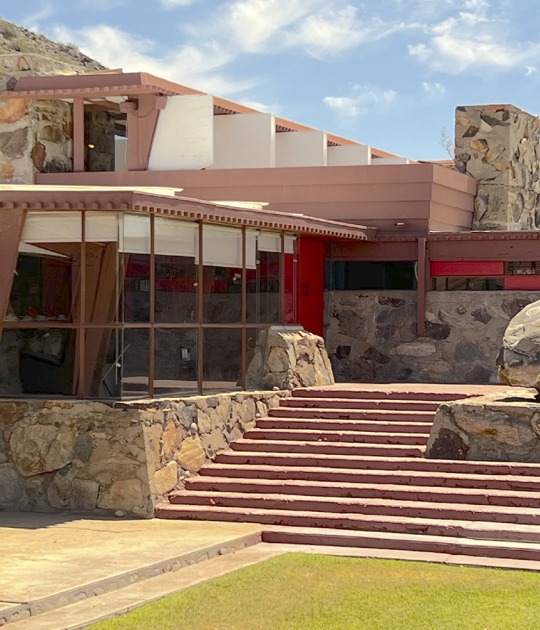“Eternal nothingness is O.K. if you're dressed for it.”
Woody Allen in “Getting Even”[1]
How many times we, the architects have met ourselves talking about nothingness, I mean, about the void, and thus, elucidate the big question of the guild: what is space? Dressed for it, of course, as quoted by Tom Wolfe in "From Bauhaus to our House", simply but meticulously groomed as the Silver Prince (Gropius) or wearing a close-fitting black suit, matching with his black tie and his round black owl-eye glasses as Mr. Purism (Le Corbusier). Let define a little more this question: what is the theatrical space? By 1948 at the University of La Sorbonne in Paris there was a debate about the paths to be taken by the modern theater architecture. Le Corbusier expounded "Create pallets everywhere, (...) and let good people do comedy at any moment."[2] This would be translated as a spontaneous, essential theater, where architectural space is almost negligible. However, the stage designer and actor Louis Jouvet was opposed to this idea saying that "the great theater models –Greek- Roman, Elizabethan and Italian –, reflect the ideals of a civilization. So, every epoch deserves its theatre. The building, once it is generated by the force of the collective sense, it becomes its ultimate expression, and has a value in itself”.[3] Gropius, meanwhile, in the years of the creation of the Bauhaus, also expressed his stance: "The theatrical play, while orchestral unit, is closely akin to the architectural work. As in architecture all parts leave themselves for the benefit of the Hole Work; in the theatrical play there is focused a multitude of artistic problems, under this specific law, in favor of a new, larger unit." [4]
How many times we, the architects have met ourselves talking about nothingness, I mean, about the void, and thus, elucidate the big question of the guild: what is space?
The debate about the spaces and their relationship with the theatrical is very old. For centuries it has been discussed about the "hierarchical and princely status of theater and the recurrent appeals to its collective, democratic, homogenizer and open character" [5] said Ignasi de Sola-Morales in his essay on the Spanish theater architecture. The discussion ranged from two trends. Do we have to choose those princely magnifiscent festivities where space must be suitable for the changing and moving performances? Or should we assume a recovery of the explanations in Book V of Vitruvius on the architectural values of the theater artifact, where a tier distributed homogeneously viewers opposing the fixed space of the stage?
Today the modern space is moving, changing; in it the views are multiple. So what has all this to do with Woody Allen?
This debate is discussed in modernity linked to the concerns of the avant-garde arts and expressed a desire to escape from the delimited area of the traditional theater: the stage box. Considering transforming the conventional stage space, modernism refused not only the illusion of perspective, but the naturalist longing of bringing life to the scene. Modern times were radically transforming the viewer's perception modes. Therefore, to be faithful to modern representations, the theater had to change, to re-propose the relationship between the stage and the audience.[6] It should create a new performance space, conceiving new architectural forms, whether inspired by the old, or marginal and popular genres, like the circus or the cabaret, shaking the seeds of the traditional bourgeois theatrical institution. In short, “to get even” with the princely theatrical culture.
Today the modern space is moving, changing; in it the views are multiple. So what has all this to do with Woody Allen? These ideas nested in my head when I attended as a spectator to the play "Husbands and Wives"[7] represented in March 2013 in the historic “Corral de Comedias” of Alcala de Henares built in 1601. This theater is not only one of the oldest in Europe, but it was among the first Spanish theaters. Since there was no space for this purpose, in the courtyard of plebeian houses a stage was installed against the back wall. The inner courtyard is now covered (XVIII century) and the balconies of the old quarters make the boxes as they were originally. At the time hierarchies were established there by location. Its arrangement is very similar to the English Elizabethan Theater. However, the space is flexible. For the representation of "Husbands and Wives" the director ignored (freed from) the classical distribution, taking the stage to the central courtyard. The scenery: a central table, with a few glasses, bottles and magazines. Eight sofas of different styles and colors, arranged in pairs on each side of the quadrangular space. The sofas are partially occupied by a small number of viewers. The dynamics of the actors appropriated the site using the public as scenery, confidant and accomplice. These actions established that "ideal" relationship between actor-spectator described by Tadeusz Kantor (theater director, painter, art theorist, writer, actor, stage designer): "The ideal arrangement is the lack of separation between public and scene. If the architectural conditions allow this relationship, much better." [8]
We were still far from having full awareness that as well as in modern architecture space is a central aesthetic category, so it is the historical avant-garde theater, which questions the place of the Italian theater.
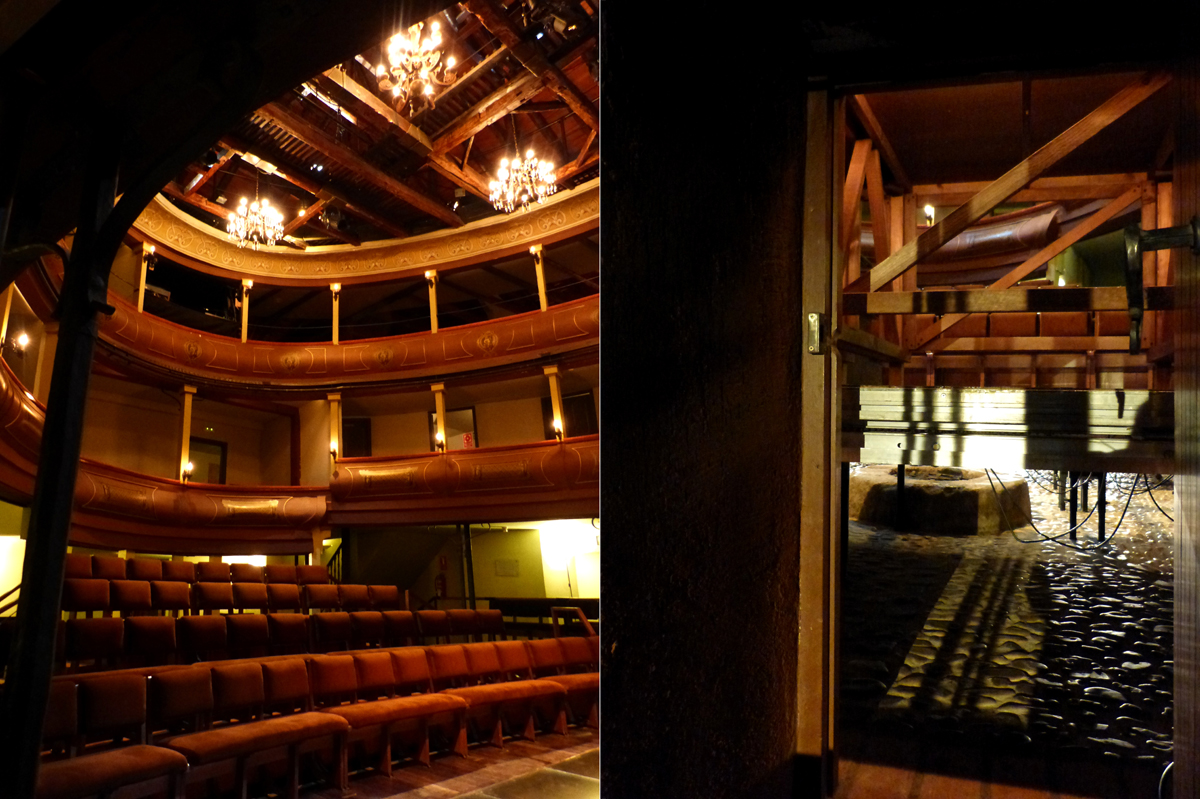
Comedy Corral in Alcalá de Henares. 1601. Roof of the eighteenth century. Reform boxes nineteenth century. Right: Original stone floor with moat and removable top platform, depending on the type of representation. Photographs © Verónica Roseo.
The actors were the delight of the audience, and after the play they offered a colloquium. Would Woody Allen enjoy the show? "Surely as a dwarf!” opined one of the spectators. He would have enjoyed the undisputed quality of representation, the wonderful acoustics, the exquisite architectural condition of this so unusual theater ... But we are talking about Woody Allen!, who through "Death Knocks" decided "To get even with (his own reference) Ingmar Bergman". Therefore, to be limited to the above mentioned qualities would be reductionist: The thing was to get even with the princely theater space. However, it is not a statement. Allen wasn`t able to get even with Bergman, so this is less an iconoclastic text of a theatrical tradition from which we have drank so much.
The theater is a text, staged in a particular place, which is defined by the space, time, light, the actor's/actress’s body, his/her movement, his/her voice.
Talking about Bergman and the theatrical tradition, I want to go back to another play of Allen: "Death".[9] We represented this play in the college years with a group of friends mostly architecture students. It took place in a small Italian theater. We were still far from having full awareness that as well as in modern architecture space is a central aesthetic category, so it is the historical avant-garde theater, which questions the place of the Italian theater. Intuitively we assemble a representation that made an extensive use of the corridors between the seats in the stalls which were used as streets, while the proscenium, with the backdrop closed and an austere scenography (a light pole and a park bench) served as the city square. The importance of the city in the work of Woody Allen is undeniable, from his great fetish, New York, to the essential stages of his last films as Barcelona or Paris. It was so important that the characters become even more urban: a prostitute, a maniacal doctor, a seer with his acolytes and vigilance committee organized between comrades in search of the dreaded murderer.
The theater is a text, staged in a particular place, which is defined by the space, time, light, the actor's/actress’s body, his/her movement, his/her voice. We could consider an analogy between theater and architecture, where the latter runs under these same concepts through a program and a user. A combination between technology and reflection on contemporary theatrical space adaptable to any type of representation can be found in the Wyly Theater in Dallas by REX / OMA. The Wyly Theater is a tremendously flexible "theater machine" that reconfigures itself, in addition to a dialogue with the city and the immediate exterior space through its versatile facades. "We need to start offering processes again instead of offering objects”[10] says Joshua Prince-Ramus (cofounder of OMA New York) after discovering that the shiny silver helmet he had received when he was assigned to design the theater was only for decorative purposes and it doesn’t represent in any way his importance as an architect. Tremendous disappointment! Although, he took it as a metaphor to assess the state of architecture text today. But, what would Woody Allen said at such architectural thoughts? Let’s respond with an excerpt from one of his plays:
NAT: Who are you?
DEATH: Death. You got a glass of water?
NAT: Death? What do you mean, Death?
DEATH: What is wrong with you? You see the black costume and the whitened face?
NAT: Yeah
DEATH: Is it Halloween?
NAT: No
(…)
NAT: What do you want with me?
DEATH: What do I want? What do you think I want?
NAT: You must be kidding. I'm in perfect health.
DEATH (unimpressed): Uh-huh. (Looking around) This is a nice place. You do it yourself?
NAT: We had a decorator, but we worked with her. [11]
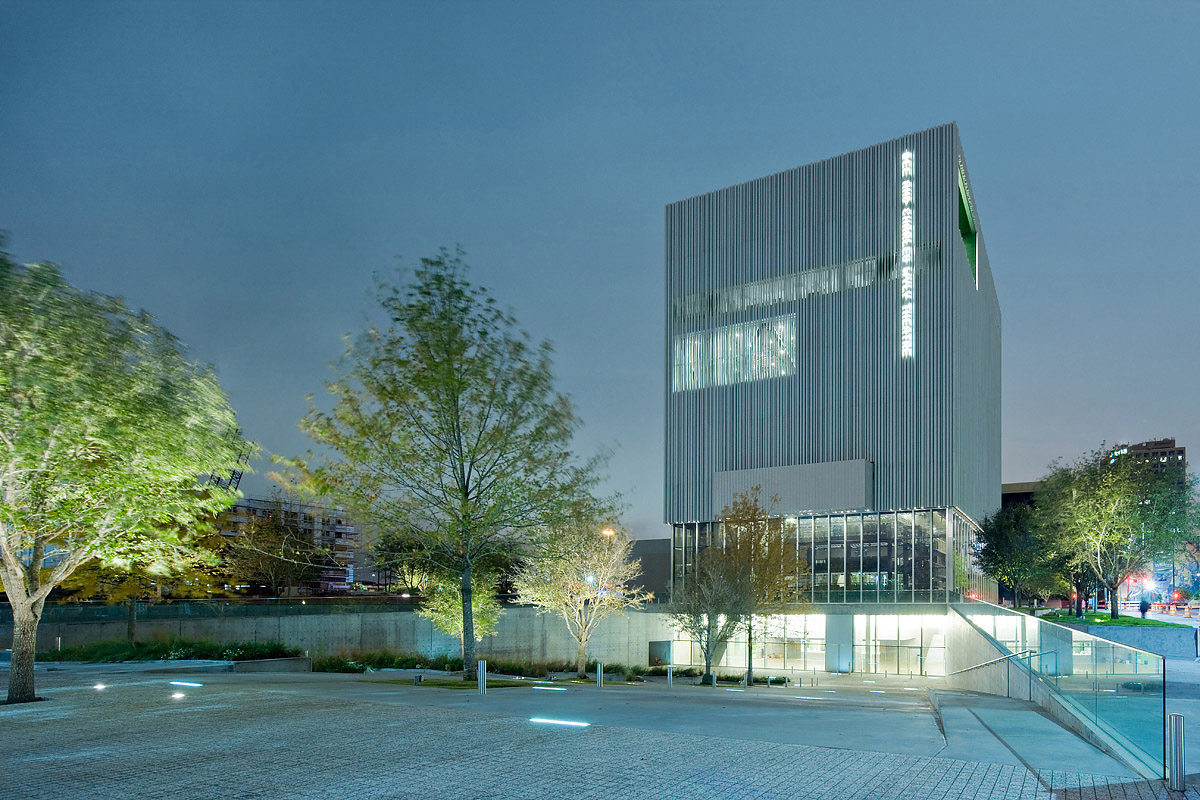
AT&T Performing Arts Center Dee and Charles Wyly Theatre. REX/OMA. Photograph © Iwan Baan
NOTES
[1] ALLEN, Woody. “Getting Even”. Random House, Inc. New York. 1971.
[2] LE CORBUSIER. "Le Théátre spontané". In: Architecture et dramaturgie. Flammarion Editeur. Paris. 1950. P. 150.
[3] Antoni RAMÓN GRAELLS. “Teatro y Arquitectura”. In: “Teatro: revista de estudios teatrales” No. 5. Alcalá de Henares. 1994. Pp. 159-165.
[4] GROPIUS, Walter. 1923. Ibid. [3] P. 164.
[5] SOLÀ-MORALES, Ignasi. “Arquitectura teatral en España”. Dirección general de arquitectura y vivienda. Barcelona. 1985. Pp. 12-25
[6] Antoni RAMÓN GRAELLS. “Teatro y Arquitectura”. Ibid. [3]
[7] “Maridos y Mujeres”. Director: Álex Rigola. A production of La Abadía. Season february-march 2013. Original script: ALLEN, Woody. “Husbands and Wives”. 1992.
[8] KANTOR, Tadeusz, 1990. Cited by: Antoni RAMÓN GRAELLS. “Teatro y Arquitectura”. Ibid. [3]
[9] ALLEN, Woody. “Death”. In: “Without Feathers”. Ballantine Books. New York. 1975.
[10] PRINCE-RAMUS, Joshua. “Building a Theater that remakes itself”. TED Talks. October 2009.
[11] ALLEN, Woody. “Death Knocks”. In: ALLEN, Woody. “Getting Even”. Ibid. [1]
* BELOW. Time lapse of the transformation of the Wyly Theatre. REX/OMA.
